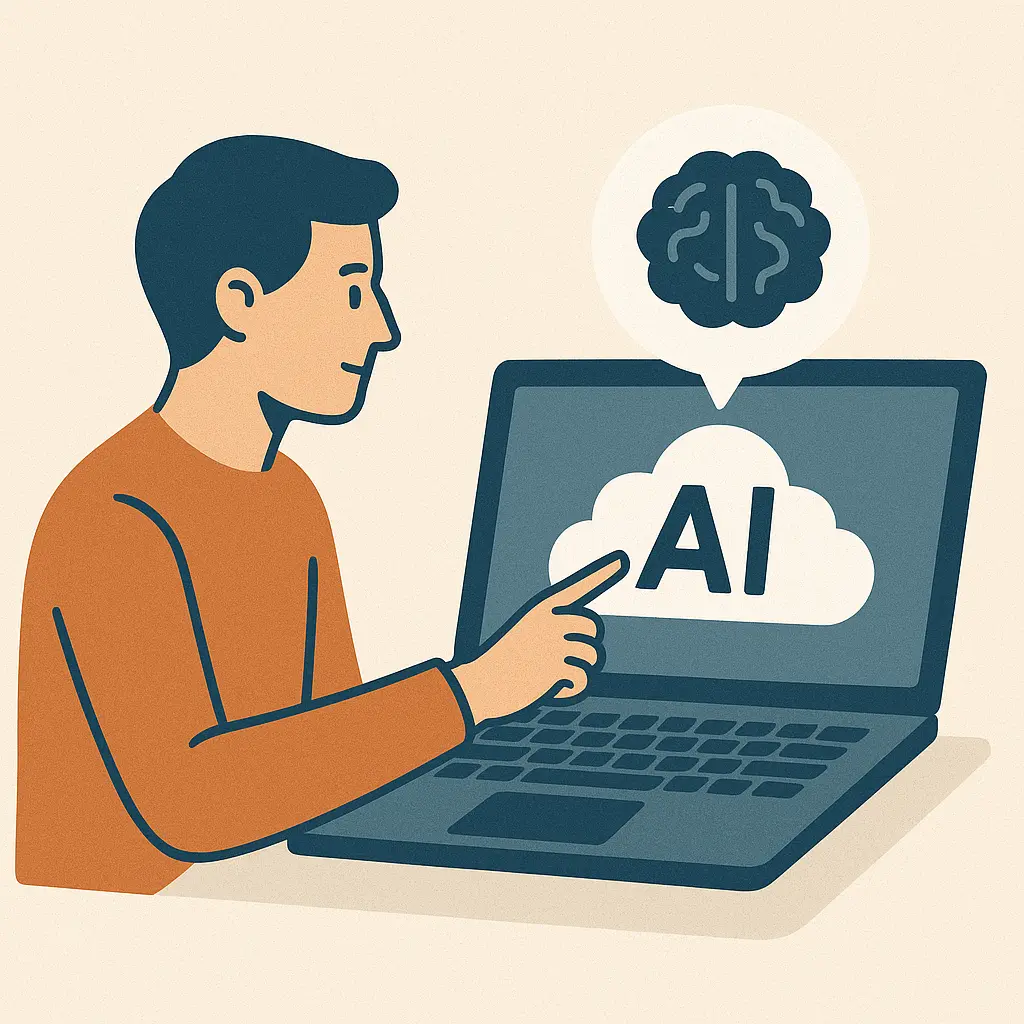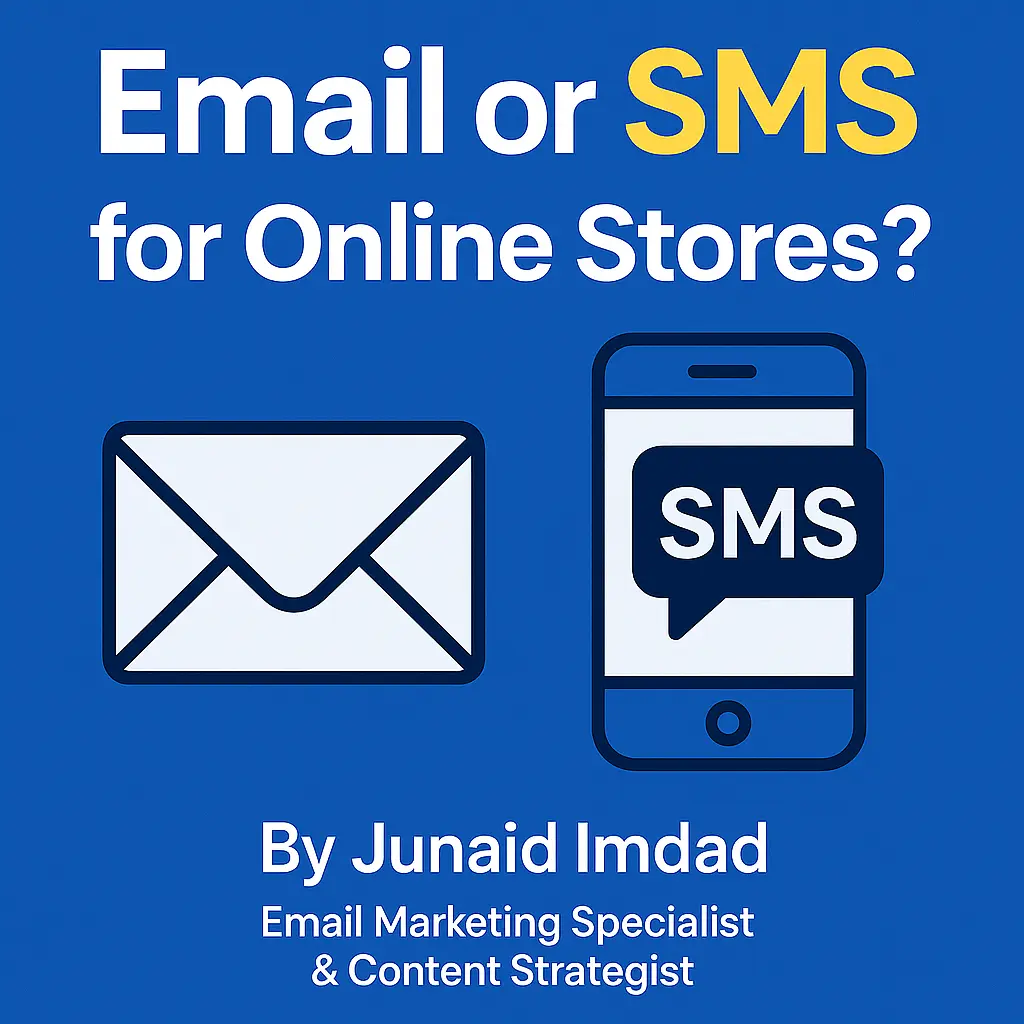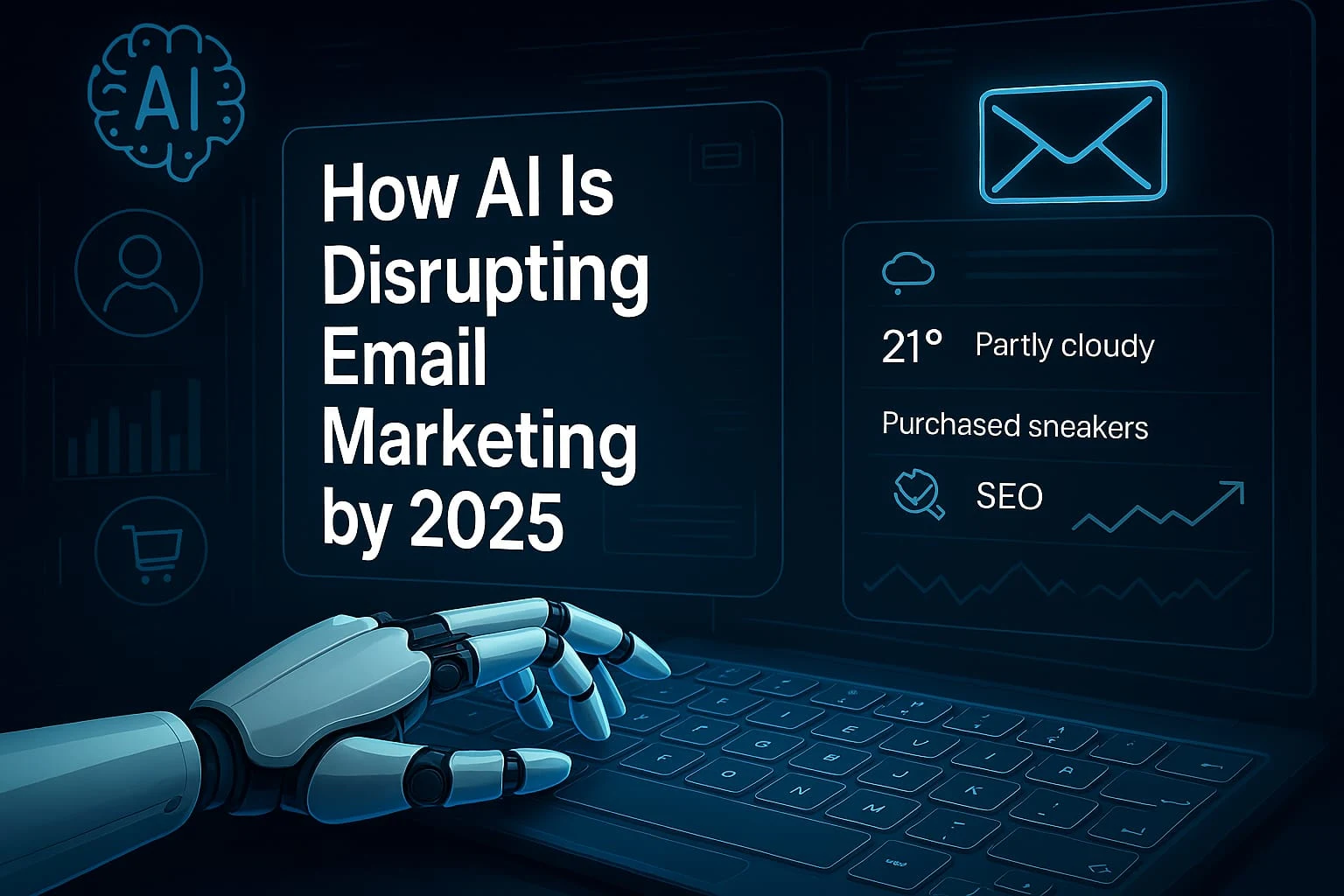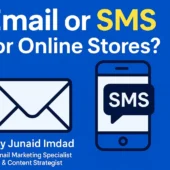By Junaid Imdad, Blogger & Digital Experience Strategist
Let’s be honest—email marketing used to be pretty simple. You’d craft a message, hit “send to all,” and cross your fingers that someone on your list would open it, click a link, or maybe even make a purchase. It was all about the numbers, and success often hinged more on luck and timing than on any real strategy. But fast forward to 2025? That approach just doesn’t cut it anymore.
Welcome to the age of AI in email marketing, where mass emails and guesswork are becoming things of the past. Artificial Intelligence is completely reshaping how we engage with our audiences, and Email Marketing in 2025 is one of the areas seeing the most significant changes. With smart automation, marketers can now deliver personalized content that’s tailored to individual behaviors, preferences, and past interactions—on a large scale. Email campaigns aren’t static anymore; they evolve in real-time based on how users respond (or don’t respond) to your messages.
In my five years as a content strategist and email marketer, I’ve witnessed this transformation up close. What used to be a manual, intuition-driven task has now turned into a data-informed, highly personalized strategy. With AI taking care of audience segmentation, optimizing send times, predictive analytics, and even testing subject lines, today’s marketers have access to insights that would have seemed impossible just a few years back. And the results? Significantly better open rates, stronger customer relationships, and a much more impressive ROI.
In a nutshell, if you’re still clinging to the old spray-and-pray method in 2025, you’re not just lagging behind—you’re practically invisible. AI isn’t some far-off concept anymore; it’s the new backbone of successful email marketing.
So how will AI affect email marketing in 2025, and more importantly how can you (or your brand) stay ahead of this change?
AI in Email Marketing 2025
AI in Email Marketing 2025 is transforming the way businesses engage with their audiences—putting an end to the era of bland newsletters and cookie-cutter email blasts. Nowadays, artificial intelligence is at the heart of crafting smarter, more captivating, and deeply personalized campaigns that truly stand out in the crowded digital landscape. With the help of advanced machine learning algorithms, marketers can now segment their audiences down to the tiniest details, customize email content based on user behavior, and optimize the timing of their messages for each individual recipient.
Rather than relying on guesswork about what content might resonate, AI tools in 2025 sift through massive amounts of behavioral data—like browsing habits, previous purchases, engagement trends, and even emotional responses—to anticipate what your audience craves before they even realize it. This predictive power means that emails don’t just land in inboxes—they inspire action. Automated campaigns can now adjust in real-time, tweaking tone, messaging, or offers based on how recipients respond to earlier content.
Whether you’re a freelancer managing a growing email list or part of a corporate team running global campaigns, this evolution is more than just convenient—it’s game-changing. By leveraging AI to refine email strategies, businesses are experiencing higher open rates, fewer unsubscribes, stronger customer loyalty, and a significant boost in ROI. In a nutshell, if your emails aren’t personal, timely, and relevant in 2025, they’re likely to be ignored—and lost in the shuffle.
1. Hyper-Personalization Is No Longer Optional, But Expected
Hyper-personalization has really become the standard that customers expect these days. Just tossing a first name into an email doesn’t cut it anymore; that’s basically the bare minimum. With AI in Email Marketing 2025, brands are tapping into sophisticated data analysis and behavioral tracking to create content that’s truly tailored to each individual. This means personalized product recommendations and perfectly timed messages, making sure every interaction feels like it was made just for the recipient.
AI has enabled email personalization to reach unprecedented heights, with emails now capable of dynamically adapting based on:
- Recent browsing or purchasing behaviors
- Demographic data, email engagement history, and real-time context data, such as weather conditions or user location are no longer optional in modern campaigns. These elements form the foundation of hyper-personalized strategies, especially when using AI in Email Marketing 2025. When managed correctly, this data allows businesses to craft emails that resonate on a personal level, adapt to the user’s environment, and drive better engagement and conversions. Ignoring these key data points means missing out on meaningful connections with your audience.
- Imagine: AI in Email Marketing 2025 has completely transformed how fashion brands communicate with their customers. Imagine running an online fashion store and no longer relying on a one-size-fits-all summer sale email. Instead, your AI-driven system dynamically generates thousands of personalized email variations. A customer in Florida might receive a curated selection of swimsuits and beachwear, while someone in Seattle sees promotions for stylish rain jackets and waterproof footwear. These customizations are based on each user’s style preferences, purchase history, and even real-time weather data—resulting in higher open rates, better engagement, and more conversions.
- Results: More opens, more clicks and increased sales.
Personalization has become the cornerstone of effective email marketing in 2025.
2. Predictive Analytics: AI Knows Before You Do
AI can go beyond simply responding to customer behavior by foreseeing it and predicating it.
Marketers can now leverage machine learning for accurate forecasting:
- Who is likely to opt-out?
- Which users are ready to purchase?
- What can be the consequences when someone abandons their cart?
- Which subject lines are likely to convert for each segment?
The predictive power of AI in Email Marketing 2025 is transforming how brands approach their campaigns. Instead of just sending out emails and hoping for the best, companies can now create targeted campaigns that are backed by data-driven insights and real-time personalization.
Take Netflix, for example—its AI-driven recommendation system influences 80% of what viewers choose to watch. Similarly, AI in Email Marketing 2025 is making waves. Today’s sophisticated email platforms can anticipate what subscribers want, often before they even realize it themselves, delivering highly personalized content that boosts engagement and drives conversions.
3. AI Copywriting: From Draft to Done in Minutes
Admittedly, this step seemed strange at first.
As a writer, I used to be hesitant about using AI for content creation. But by 2025, tools like ChatGPT, Jasper, and Copy.ai have become essential writing companions—more like collaborative partners than substitutes for creativity. Whether it’s crafting engaging blog introductions, polishing email copy, or creating personalized content snippets, AI now boosts both the speed and quality of our work. This shift is part of a larger trend where AI is reshaping communication—especially in fields like Email Marketing 2025, where these tools assist in crafting messages that truly connect with individual subscribers.
Now I use AI to:
- Bounce email subject lines ideas off one another
- Generate A/B testing variations.
- Create introduction texts for newsletters
- Repurpose blog content into email snippets for use as promotional messages.
These tools really help me with my writing, and they often come up with some surprisingly creative ideas. Whether I’m crafting catchy subject lines or organizing longer pieces, AI speeds things up while still allowing for that essential human touch. Sure, having a human edit is crucial for nailing the right tone, nuance, and brand voice, but AI gives me a fantastic jumpstart. In fact, the future of AI in Email Marketing 2025 thrives on this perfect mix of machine-generated content and human polish, enabling marketers to whip up personalized, conversion-focused emails faster than ever!
Pro Tip: Use AI to create five different versions of a subject line, then split test your top two versions and let the data reveal which voice resonates most with readers, a strategy that defines the precision and personalization driving AI in Email Marketing 2025.

4. Smarter Segmentation and Targeting
Gone are the days when marketers could just send out the same generic email to everyone on their list and expect to see good results. That method, which used to be the norm, is now not only outdated but also counterproductive. In 2025, firing off bulk emails without any segmentation often results in poor open rates, more people unsubscribing, and a higher chance of being flagged by spam filters. Audiences have become more selective, and inbox algorithms have gotten smarter, making it clear that the “spray and pray” approach is no longer effective.
With AI taking center stage in Email Marketing in 2025, the new norm is all about precision targeting and hyper-personalization. Brands are using machine learning to break down their audiences into detailed segments based on real-time behaviors, preferences, buying habits, and even sentiment analysis. Instead of sending out one-size-fits-all promotions, businesses are crafting messages that feel custom-made—offering product suggestions, personalized incentives, and content that resonates with each subscriber’s unique journey.
This change doesn’t just boost engagement metrics—it transforms them. Open rates soar when subject lines are tailored to past reader behavior. Click-through rates climb when emails align with a user’s genuine interests. And most importantly, long-term customer loyalty deepens when subscribers regularly receive messages that feel relevant, timely, and valuable.
The takeaway: in 2025, smarter segmentation isn’t just a nice-to-have—it’s essential. The success of email marketing hinges on how well you listen to your audience, understand their needs with the help of AI, and create campaigns that speak directly to them—not at them.
AI allows for real-time segmentation based on user behavior and intent.
Imagine selling skincare products. By using AI, your system could:
- Group customers according to skin type based on product purchases.
- Segment by engagement level (daily openers vs. inactive users).
- Find customers that need reactivation offers.
Now you aren’t just sending emails; instead, with AI in Email Marketing 2025, you are targeting specific individuals at specific times with targeted and pertinent communications.
Intelligent targeting drives greater engagement and increases deliverability.
5. Real-Time Optimization: Campaigns That Adapt Dynamically
One of the most significant developments of 2025:
- AI now makes live email optimization possible.
- Subject lines can be adjusted based on device or location in real time, providing instantaneous content updates.
- Content blocks may change depending on who opens an email message.
- Send times can be tailored specifically for each user based on when they typically open their emails.
- Simply stated, emails no longer remain static documents. They now offer unique experiences tailored specifically for each recipient.
Five years ago, such a degree of flexibility would have been unheard of; today it’s revolutionary.
6. Automation That Feels Human
By 2025, email marketing automation has transformed dramatically from the days of sending out five generic emails to a static list. That once-innovative approach is now a relic in a digital world that thrives on personalization, speed, and a focus on the customer.
With AI in Email Marketing 2025, automation is all about creating smart, context-aware email flows that adapt in real-time to user behavior, preferences, and where they are in their customer journey. These aren’t just pre-programmed sequences; they’re dynamic campaigns that change based on live data.
Take, for instance, a user who leaves items in their cart. Instead of sending a generic reminder, the AI digs deeper, looking at what the user browsed, how long they spent on each item, and their previous buying habits. It then crafts a highly personalized follow-up email, possibly offering a discount, suggesting related products, or creating a sense of urgency that aligns with the user’s interests and intentions.
Welcome sequences have also evolved beyond one-size-fits-all templates. With AI, if someone signs up after reading a blog post about SEO tools, they might receive onboarding content that focuses on SEO tips and tutorials for the platform—rather than the usual introductory emails that everyone else gets.
These sophisticated automations make emails feel less like marketing pitches and more like genuine conversations—a back-and-forth between the brand and the customer. The outcome? Higher open rates, greater engagement, lower churn, and a significant boost in ROI.
In 2025, AI has redefined automation as anticipation—understanding what your audience wants before they even ask and delivering it with perfect timing and tone.
Example:
With AI in Email Marketing 2025, even post-click behavior is optimized. When customers click on a product but don’t purchase, the system automatically triggers a follow-up email featuring curated customer reviews and testimonials specific to that item—building trust and encouraging conversion.
If the customer clicks again without converting, they receive an exclusive, limited-time offer with social proof.
If they convert, they’re added to our loyalty series with handpicked recommendations.
All this happens automatically and each email feels personalized for their individual recipient.
AI differs from robotics in that it allows automation while still remaining non-robotic.
7. Improved Deliverability and Spam Detection
AI has also proven invaluable when it comes to email deliverability.
Now, intelligent systems analyze:
- Include hygiene and bounce rates when writing copy for publication.
- Engagement signals (opens, clicks and time on page)
AI can identify issues before sending and even suggest improvements that will keep emails out of spam folders.
With AI in Email Marketing 2025, deliverability becomes more than a technical metric—it’s a strategic advantage. For companies relying heavily on email revenue (especially online stores), AI ensures that emails land in the inbox, not the spam folder. By analyzing sender reputation, optimizing send times, and adjusting content in real-time, AI dramatically improves the likelihood that your message actually gets seen.

8. Voice-Integrated and Multimodal Emails Are Emerging
One trend I am currently exploring: voice-integrated and multimodal emails.
As tools such as Siri, Alexa and Google Assistant become more advanced, email is no longer just visual; AI now makes possible:
- Voice-read summaries for inbox previews
- Interactive emails with intelligent replies
- Multimodal emails incorporating video, audio and real-time elements.
2025 is seeing an explosion of experience-based emails.
Final Thoughts:
Will AI Replace Email Marketers? Short answer? No; however it will replace those who fail to adapt quickly enough. If you want to know about email versus SMS, simply click on it.

AI isn’t here to take your job; it’s here to make it better. As a marketer, you’ll find your role shifting from just executing tasks to becoming a strategist, thanks to AI handling the tedious data work that used to consume your hours.
If you’re currently working in email marketing or thinking about diving in soon, embracing AI in Email Marketing 2025 can really boost your efforts. Instead of replacing the creativity that humans bring, AI serves as a fantastic partner, helping marketers enhance personalization, optimize timing, and uncover valuable insights. Dive in, experiment, and see how it can elevate both your strategy and storytelling.
The brands that thrive in 2025 won’t necessarily be the ones with the biggest budgets; they’ll be the ones that leverage AI to connect with real people in meaningful ways.
Are you curious or looking for help in integrating Artificial Intelligence into your email strategy? Let’s chat! I specialize in creating smart, scalable email marketing systems that still have that human touch. Reach out today, and let’s work together to future-proof our marketing!
By Junaid Imdad, Blogger & Digital Experience Strategist
Connect with me on LinkedIn




Email or SMS for Online Stores? - Devitcity
[…] brand building; while SMS delivers instantaneous, urgent reminders. If you want to get info about Ai disrupting email, simply click on […]
Artificial Intelligence Versus Human-Written Content: Which Will Perform Better for Ranking in 2025? - Devitcity
[…] compliant with Google guidelines is the key to dominating SERPs. If you want to get info about Ai disrupting email, simply click on […]
10 Proven Email Marketing Strategies for 2025 - Devitcity
[…] each email can either build trust with its recipient(s) or break it. If you want to know about Ai disrupting Email, simply click on […]
From Static to Interactive: Design Emails That Convert - Devitcity
[…] their trust will be in you–and in turn their purchase from you. If you want to know about Ai disrupting email, simply click on […]